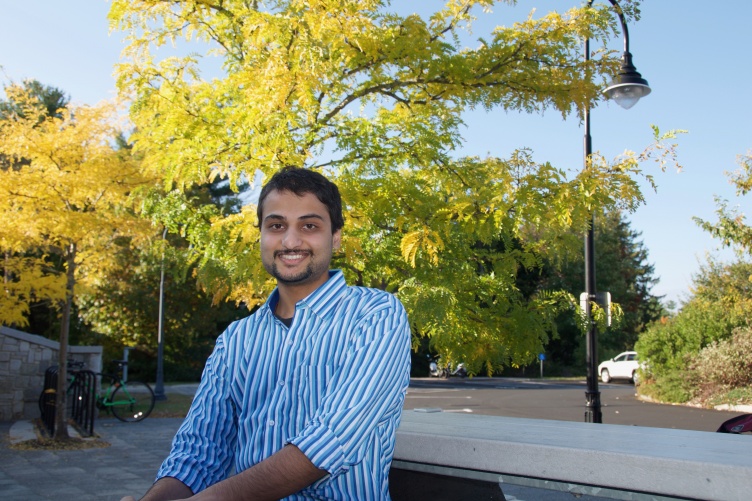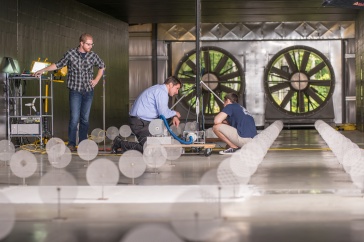
Before Pratik Aghor came to UNH to get his Ph.D. he already knew of associate professor John Gibson's work in applied mathematics. In fact, Gibson is pretty much why he came here. And while it’s not unusual for a professor’s reputation to be a draw to students, Aghor was reading about Gibson from halfway around the world.
Aghor is studying for a doctorate in applied mathematics. He received his undergraduate and graduate degrees in India, where he grew up. During his youth, he changed schools every three years due to his father’s job with the Life Insurance Corporation of India, which had the family moving around the country.
“It was good,” Aghor says. “It exposed me to many different kinds of people and different ways of thinking.”
“The applied mathematics program at UNH is good because it is a balanced combination of traditional and numerical applied mathematics."
Here at UNH, he is working on the dynamics of turbulent shear flows, which he says, in “fancy terms,” is known as the dynamical systems point-of-view of turbulence.
“My research interests are, in general, pattern formation and symmetry-breaking bifurcations. Basically, the mathematics behind patterns in nature," Aghor says. “It is general and beautiful.”
There was a time when Aghor thought he wanted to be a historian or an archeologist. He liked history and languages and was fascinated by ancient cultures. But math and science pulled at him, too; they were his strong suits. And then, he came across a problem online that Gibson was working on, and he knew what he wanted to do.
“That’s how I found out about UNH, and how I ended up here,” Aghor says. “I would have gone to the top of a mountain to work with him. And professor (Gregory) Chini. For these two people, I would have gone anywhere.”
Once he completes his Ph.D. Aghor intends to go back to India and hopes to become a professor and do research.
“The applied mathematics program at UNH is good because it is a balanced combination of traditional and numerical applied mathematics. We do courses such as applied functional analysis, but we also do courses like high-performance computing, which is the thing I like about the program.” Aghor says.
He would also like to help people whose thinking is not scientifically based, who believe in superstitions, to understand that science can be applied almost everywhere. He is well-acquainted with the work of Dr. Narendra Dalholkar, a medical doctor, social activist and rationalist who tried to have an anti-superstition law enacted in Maharashtra. Dabholkar was assassinated before he saw the bill become law.
“I feel people shouldn’t just learn science, they should be able to apply it to regular life,” Aghor says.
One way he might share that philosophy is through his writing; he started a blog where he writes fiction and nonfiction. His nonfiction is written in English; fiction, in Marathi, his native language.
“If I’m doing science, I mostly think in English,” Aghor says. “If I’m writing fiction, I think in Marathi. I wasn’t very good at writing when I was young; I started in high school. Now it is another thing I am trying to improve. ”
-
Written By:
Jody Record ’95 | Communications and Public Affairs | jody.record@unh.edu

















































